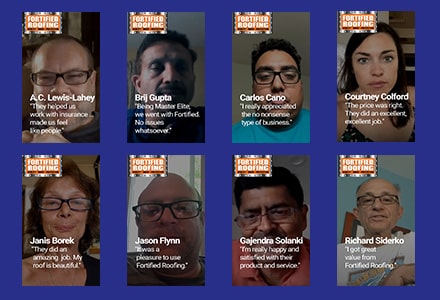Breaking Down Energy Efficient Cool Roofs
Skyrocketing energy costs have further necessitated the need for an energy efficient home. The best place to start is the roof. It takes the majority of the sun’s rays and decides whether the home is going to consume excess energy or help keep utility bills down. Homeowners looking to make their home more environmentally friendly should consult their Monmouth County roofing professionals to find the best fit for their home.
Cool roofs use materials that reflect the sunlight and lower the amount of heat absorbed. The standard material used in new homes is usually a sheet covering of aluminum but reflective paint or tiles/shingles are also used. Cool roof paints are simply thick coats of paint that are white with reflective pigments. They protect the roof from UV rays and ultraviolet damage while making it waterproof.
Houses with cool roofs can drop the temperature of the roof by at least 50 degrees Fahrenheit. This temperature drop results in less air conditioning use during the summer months. If a home has a frequently used garage, the cool roof can actually make the garage’s temperature more bearable in hot weather. It’s also been shown to extend the life of the roof because it doesn’t reach potentially damaging temperatures. As for the cool roof’s impact on the environment, studies have shown that increased usage of cool roofs can lower power plant emissions and reduce “heat islands” in densely populated areas.
Older homes can be retrofitted with a cool roof. This type of roof isn’t exclusive to new build homes. Homes with low-slope shingle roofs can be made cool with a layer of single-ply membrane. These pre-fabricated sheets are unrolled onto the roof and attached with mechanical fasteners or held into place with ballasts of gravel or pavers. The sheets are then made cool with black coatings to make them reflective. Steep-slope roofs covered in shingles are made cool by placing cool asphalt shingles that consist of specially coated granules, which reflect the sun over the top of existing materials. Unfortunately, previously existing asphalt shingles shouldn’t be coated with reflective material. Metal roofs can be made cool with reflective paint to increase its ability to reflect the sun and its thermal emittance. Tile roofs can be made cool just by coating them with surface treatments.
Cool roofs can do more than lower utility bills. They prolong the life of the roof and make non-air conditioned spaces bearable in the summer. For a relatively affordable cost, an existing home can be made greener in just a few days. Have a question regarding skylight installation or new roofs? Ask a roofing professional from Fortified Roofing of Monmouth County NJ.
Common roofing term explained by Fortified Roofing of Monmouth County NJ:
Ballasts
A ballast is a heavy material, like gravel, sand or stones, placed on roofing materials to increase their stability. Ballast options can include stones, pavers, assemblies to turn the roof into a deck, and even garden roof systems.
Question and answer from Monmouth County roofing contractor Fortified Roofing:
Are cool roofs eligible for rebates?
Some states invested in green energy are making it possible for homeowners to get a rebate on their cool roof installation. Depending on the utility company, they might pay back a certain percentage of the installation costs. Not only is the roof saving homeowners money on utilities, they’re also saving the utility company money. These companies are happy to help homeowners make the major investment.

Rated 4.7 out of 5 stars based on 8 customer reviews.

Oh My! People say such nice things!
